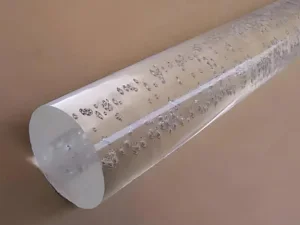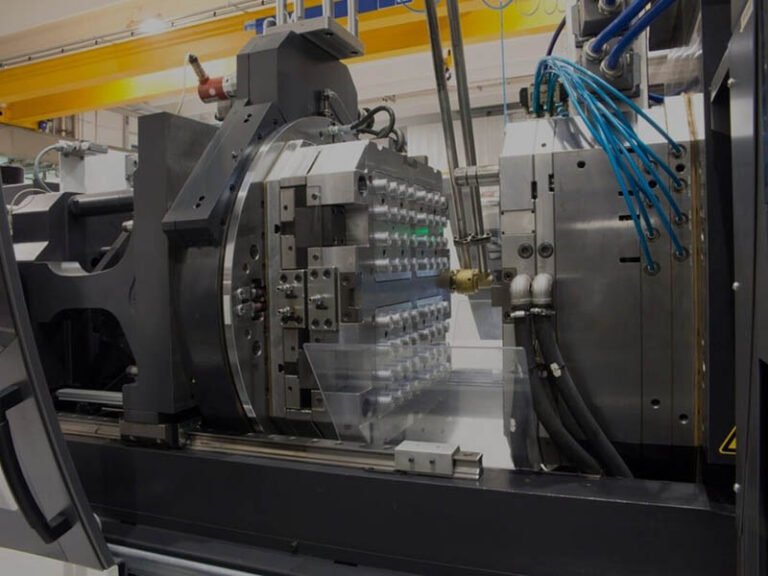Bubbles in injection molding are a common defect that can occur during the manufacturing process, posing significant challenges to product quality. These tiny air pockets, if left unchecked, can lead to various defects and imperfections, compromising the integrity and functionality of injection molded parts. To ensure high-quality, defect-free products, it is essential to understand the causes, effects, and methods to mitigate air bubbles.
In this comprehensive guide, we will explore what air bubbles are, identify the factors of their formation, and discuss their impact on the overall quality of molded products. Furthermore, we will share effective strategies and techniques to minimize and eliminate air bubbles during the injection molding process. Let us embark on this journey together to gain a deeper understanding of air bubbles in injection molding and discover best practices for producing flawless, high-performance plastic components.
What Are Bubble Injection Molding ?
Air bubbles in injection molding refer to small pockets of air that become trapped within the molten plastic material during the injection molding process. These bubbles can form due to various factors, such as improper material handling, inadequate venting of the mold, or excessive injection speeds. When the plastic material cools and solidifies, these air bubbles can become trapped inside the molded part, leading to visible defects on the surface or internal voids.

How To Get Rid Of Bubbles In Injection Molding?
If bubbles have already appeared in your injection molded parts, the first step is to identify the root cause—whether it’s trapped air, material moisture, or improper parameters. For immediate correction, you may need to increase holding pressure or adjust the injection speed to ensure the cavity is fully packed. Re-molding with properly dried materials, or modifying the mold to improve venting, can also help eliminate the issue. In some cases, small surface bubbles may be removed through post-processing methods like trimming or polishing, though this is not ideal for precision components.
Difference Between Bubbles and Vacuum Voids In Injection Molding
Bubbles injection molding and vacuum voids in injection molding are both common defects, but they have different causes and characteristics. Understanding these differences is essential for improving product quality and manufacturing efficiency. The table below highlights key distinctions and solutions.
| Feature | Bubbles | Vacuum Voids |
|---|---|---|
| Cause | Gas trapped in the molten material, often from moisture or poor venting. | Incomplete gas removal, leading to underfilled areas. |
| Appearance | Small, round or irregular shapes, typically in thin-walled or surface areas. | Larger, irregular cavities, often in thick-walled sections. |
| Location | Surface or inside parts, especially in thin sections. | Internal cavities or thick-walled areas. |
| Solution | Increase injection pressure, control temperature, and ensure proper venting. | Optimize mold design, improve venting, and adjust injection parameters. |
How Do Air Bubbles Affect Injection Molded Products?
The presence of air bubbles in injection molded products can have various detrimental effects on their overall quality and performance. Some of the key effects of air bubbles include:
Reduced Mechanical Strength:
Air bubbles create voids within the molded part, leading to weakened mechanical properties. This can result in reduced tensile strength, impact resistance, and overall structural integrity of the product.
Surface Defects:
Air bubbles can manifest as visible surface defects on the finished product, such as pits, blisters, or rough textures. These defects not only compromise the appearance of the part but also indicate potential structural weaknesses.
Dimensional Inaccuracies:
Air bubbles can disrupt the flow of molten plastic during the injection molding process, causing uneven filling and cooling. This can lead to dimensional inaccuracies in the final product, affecting its fit and functionality.
Poor Aesthetics:
Injection molded parts with air bubbles may have an inconsistent surface finish and color distribution. This can result in an unattractive appearance, especially for products intended for consumer use or display.
Lower Productivity:
The presence of air bubbles can lead to an increased number of defective parts, leading to waste and reduced production efficiency. Additional processing steps may be required to salvage or rework these defective parts, impacting overall productivity.
Weakened Chemical Resistance:
Air bubbles can create pathways for chemicals or liquids to penetrate the product’s interior, potentially compromising its chemical resistance and leading to degradation over time.
Impact on Functionality:
For products that require airtight seals or precise flow paths, air bubbles can disrupt these critical features, rendering the product ineffective or unreliable.
To mitigate these effects and ensure high-quality plastic injection molded products, Zhongde has been dedicated to eliminating air bubbles in molding processes to deliver flawless rubber and plastic products.
What Causes Bubbles in Injection Molding?
Many factors may cause injection molding air bubbles in plastic and rubber parts. Let’s analyze the causes of air bubbles in injection molding from the injection machine, injection molding process, injection molding mold, and raw materials:
Injection Machine:
- Inadequate Injection Pressure Control: If the injection pressure is not properly controlled, it can lead to air entrapment in the molten plastic, resulting in air bubbles in the final product.
- Poor Venting: Insufficient venting in the machine can prevent air from escaping during the injection process, leading to trapped air and air bubbles in the molded part
Injection Molding Process:
- Injection Speed: High injection speeds can create turbulent flow within the molten plastic, trapping air and causing air bubbles in the molded part.
- Injection Time and Speed Control: Improper control of injection time and speed can result in material overheating and degradation, leading to gas release and air bubble formation.
- Backflow: If there is backflow of material during the injection process, it can trap air and create bubbles in the final product.
Injection Molding Mold:
- Poor Venting Design: Inadequate venting in the mold can hinder the escape of air, causing air bubbles to form in the molded part.
- Insufficient Cooling: Improper cooling of the mold can cause uneven solidification of the plastic, leading to air entrapment and air bubbles.
- Mold Temperature Control: Inconsistent mold temperature can affect the cooling rate of the plastic, resulting in air bubble formation.
Raw Materials:
- Moisture Content: High moisture or water content in the plastic resin can vaporize during the injection process, leading to the formation of air bubbles.
- Material Quality: Low-quality or contaminated plastic resin may contain impurities or additives that release gases when exposed to high temperatures, contributing to air bubble formation.

How To Avoid Air Bubbles in Injection Molding?
To avoid air bubbles in plastic injection molding and achieve high-quality, defect-free products, several strategies and techniques can be employed, so learn more about how to get rid of bubbles in injection molding is very important:
Proper Mold Design:
Ensure the mold design includes appropriate venting channels and vents to allow trapped air to escape during the injection process. Proper venting helps prevent air entrapment and minimizes the risk of air bubbles forming in the molded part.
Optimize Injection Parameters:
Fine-tune injection parameters such as injection speed, pressure, and temperature to achieve a smooth and uniform flow of molten plastic into the mold cavity. Proper optimization helps reduce turbulence and the likelihood of air entrapment.
Avoid Excessive Injection Speed:
High injection speeds can lead to increased turbulence and air entrapment. Controlling the injection speed and keeping it within an optimal range can minimize the formation of air bubbles.
Use Quality Materials:
Select high-quality plastic materials that have been properly dried before the injection molding process. Moisture in the material can create steam pockets during melting, leading to air bubbles in the final product.
Purge the Injection Machine:
Purging the injection machine regularly helps remove any trapped air or residual materials that could contribute to air bubble formation.
Mold Temperature Control:
Maintain consistent and appropriate mold temperatures throughout the injection molding process. Proper mold temperature control helps ensure uniform filling and cooling, reducing the risk of air bubbles.
Utilize Gas Assist Injection Molding:
For complex parts with thick sections, gas assist injection molding can be used. In this process, nitrogen gas is injected into the mold to displace the molten plastic, helping to reduce material usage and minimize the occurrence of air bubbles.
Optimize Gate Placement:
Proper gate placement can enhance the flow of molten plastic and minimize the potential for air entrapment. Gate location and design should be carefully considered during the mold design phase. Click here to learn how to design the injection molding gate placement.
Conduct Quality Control Checks:
Implement regular quality control checks during the injection molding process to identify and address any issues related to air bubble formation. Inspect the finished products for surface defects and dimensional accuracy.
By implementing these strategies and closely monitoring the injection molding process, manufacturers can effectively avoid air bubbles and produce high-quality, defect-free injection-molded products.
Conclusion With Bubbles In Injection Molding
Bubbles are a unique defect in transparent injection molded products in molding defects. Since many plastic materials can exist in transparent form, solving bubble problems in plastic and rubber injection molding is critical to ensuring high-quality products. Zhongde, a reliable manufacturer with expertise in process control, mold design, and material selection, is also critical to ensuring defect-free products and improving efficiency.




